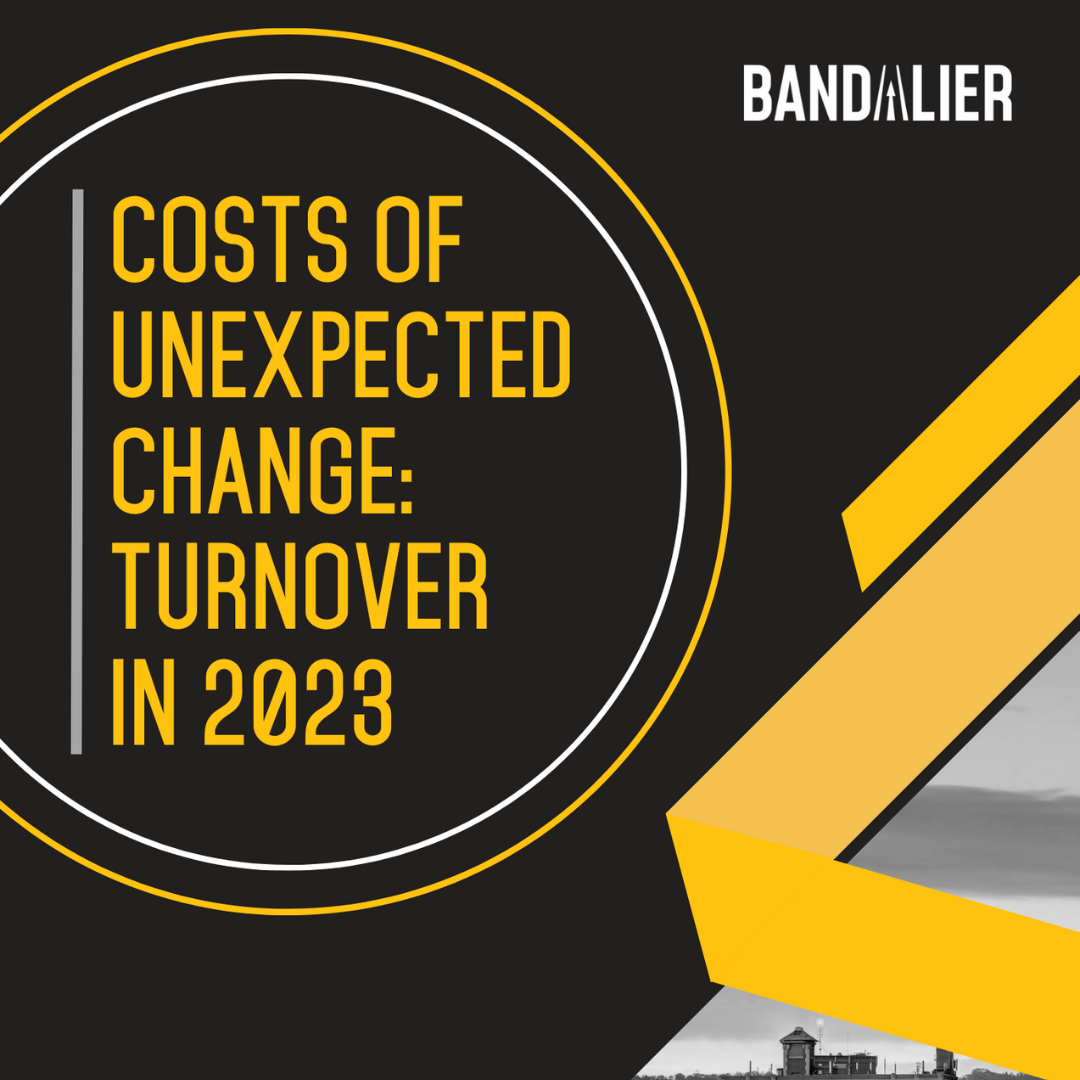Companies are seeing more employees leave than ever. “The Great Resignation” began in early 2021, when quit rates spiked to 2.5% – a level unseen since 2001. After this initial spike, employees continued quitting, and quit rates have remained high ever since.
The trend began in blue-collar fields, such as retail and manufacturing. Over time, the impact rolled over to white-collar fields like banking and business services. By mid-2022, every industry had experienced a quit rate of 3.0% or more.
A recent BLS Job Openings and Labor Turnover report indicates a move toward stability, with an average quit rate of 2.5%. Throughout 2022, the quit rate slowly but steadily declined for most industries. Quits in professional and business services have decreased, but the quit rate persistently hovers around 2.4%.
Furthermore, many of these departures haven’t followed the traditional process. According to a survey by Team Blind in late 2021, 2% of professionals have left a job without notifying their manager or human resources team. LinkedIn reports that employees are leaving roles more quickly than ever – 10% more LinkedIn members reported holding a new position for less than a year in 2022.
Why Quit?
Lacking Engagement
Many organizations already have their hands full handling turnover. On top of that, employees are less satisfied with their roles – and less engaged. To add to the chaos, business leaders continue to grapple with the concept and consequences of what’s been referred to as “Quiet Quitting.”
The term went viral on social media in the middle of 2021, just as quit rates rose. Some people chose to leave the workforce entirely. Some of those who stayed opted to do exactly what was expected of them – no more and no less. Why?
According to a 2021 Pew Research Center survey, the first waves of the Great Resignation in the U.S. were primarily driven by low pay and a lack of opportunities for advancement. Employees needed more flexibility. Those with families often cited a lack of child care as one of the primary drivers for their resignation.
This discontent was widespread. In 2022, McKinsey found that 40% of workers surveyed across 6 countries were considering leaving their jobs in the near future. Their survey supports Pew’s findings – workplace flexibility was a key decision-making factor as individuals evaluated new opportunities. Career development and supportive environments were also crucial factors.
With few promises of advancement, younger employees found fewer reasons to stay engaged with their workplace. In the back half of 2022, Gallup estimated that 50% or more of the U.S. workforce was not fully engaged at work. Their survey echoes similar frustrations to those expressed by survey respondents from McKinsey and Pew Research Center. Things seemed grim for employees:
- 50% of U.S. employees reported experiencing high levels of stress each day
- 41% reported feeling worried for much of the day
- 63% indicated widespread corruption
But there was a highlight for employees: 71% said it was a good time to find a new job. As individuals resigned, those who returned to the workforce opted to explore new industries. Between April 2020 and April 2022, 65% of individuals who quit their jobs opted to return to a new sector of the workforce. However, 17% of respondents did not return to the workforce at all.
Mitigating the Impact of Unexpected Turnover
What can you do to mitigate the impacts of turnover on your team? Let’s talk about solutions.
Remember that some amount of turnover is natural – not everyone will stay on your team forever. According the BLS, average turnover ranges from 3% to 9%, depending on the industry. Note that this statistic includes voluntary and involuntary separations.
Prepare for Turnover
Make sure your team engages in succession planning. If one role were to suddenly open, would you have a team member ready to fill it? Internal promotions are typically faster than internal hires, and recruiting for lower-level positions is simpler than recruiting for high-level roles. Coupled with employees’ recent emphasis on career progression, planning for internal team members to step into recently-vacated positions is a no-brainer.
As you outline your succession plans, it’s a great time to identify each team member’s responsibilities. If your team members have picked up additional duties over their tenure, it’s easy to lose track of what each person is responsible for accomplishing. Make sure you review each team member’s duties and responsibilities consistently and identify which team members have some overlap. This way, you’ll be prepared to temporarily reassign responsibilities when a team member leaves.
Learn the Reasons
If your turnover rate is higher than your industry average, it’s time to do some digging. What’s causing employees to leave so often?
Your first step should be to ask them. Exit interviews are a key organizational learning experience. Make time for them, and keep lines of communication open for your departing team members. Keep note of their reasons for leaving and change what you can to reduce future turnover.
The most common reasons that people leave organizations are some of the hardest to change. Statistically, the most common reason people pursue new roles is higher compensation. While this statistic has long been common knowledge, the issue has become more acute in recent years. In a 2017 LinkedIn study, 45% of respondents indicated that higher compensation was the primary factor in their decision to pursue a new role. In 2021, that number jumped up to 63%.
Growth opportunities have become increasingly important to employees, too. 63% of employees said that lack of opportunities for advancement pushed them to leave their roles in 2021 – almost double what was reported in 2017. Workplace culture has remained a key consideration for roughly 25% of departing employees.
While these statistics can be helpful to start conversations with your team, you’ll need to ask great questions to fully understand your team’s experience. Keep note, and start more internal conversations to identify and prioritize improvement opportunities.
Lighten the Load
If you’re experiencing above-average turnover, your remaining team members are likely feeling the pressure. How can you support them?
One option is to accelerate your hiring process. However, this option comes with its own hazards. Choosing the wrong candidate can tack on unexpected costs – up to 30% of the role’s first-year salary. According to a 2017 survey by CareerBuilder, the average cost of a bad hire is $14,900. When reviewing poor hiring outcomes, 30% of respondents said their choice was made under time pressure. The majority of these poor hires produced poor-quality work and had a poor attitude, impacting the productivity of their entire team.
To find talent fast, you’ll be better off working with a partner. Some organizations see success working with traditional staffing and recruiting firms. After all, they can help you find the right candidates fast. But those candidates will come with a high price tag, and they might not be the right fit for your team culture. If the hire doesn’t pan out, you’ll have to start the search process from the beginning.
Rather than working with a standard staffing agency, find a talent partner. They’ll focus on pairing you with long-term talent rather than simply filling a role. Talent partners, like Bandalier, understand your company culture, as well as the key skills your team members need to succeed. Focusing on long-term fit means that your new team members will be ready to build a career with you – reducing the likelihood of turnover in the future.
Bandalier develops outsourced teams full of fresh talent. Our vetted and trained team members will learn from you as they grow into their roles, making it easy for you to build your dream team.
Costs of Turnover
Turnover is expensive – especially for sales teams. To learn more about the costs of turnover, complete the form below and download our free whitepaper.














